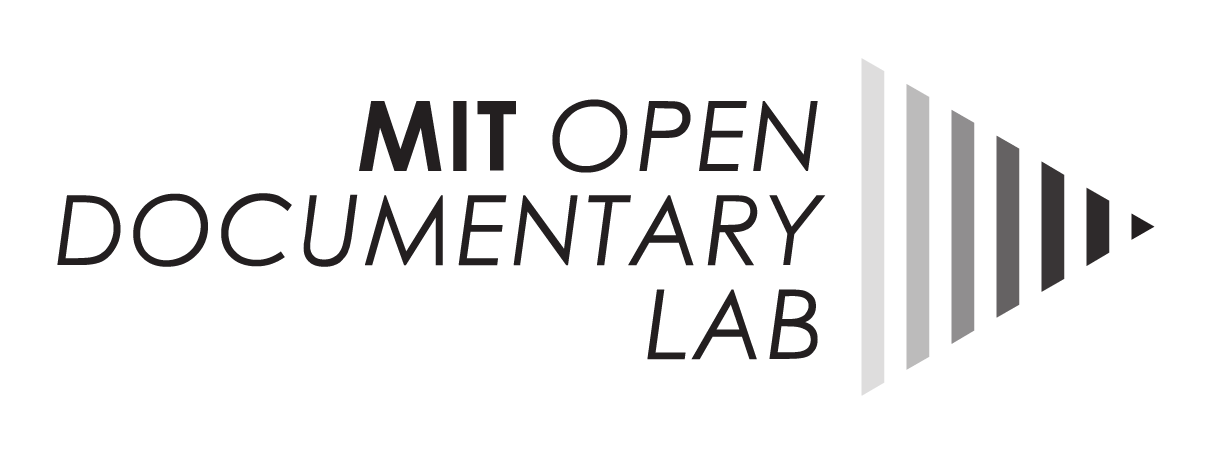
19 Feb Research Forum | Moments of convergence and innovation between documentary film and interactive media, Part 1
The Research Forum is OpenDocLab’s space for researchers to voice their opinions and test new theories. As part of our mission to promote the exchange of ideas about the new arts of documentary, we hope to encourage academic discussion and debate about these emerging forms by creating a place where researchers can develop ideas and interact with the field. The views presented here belong to their authors, and will necessarily take different forms. In the spirit of the documentaries we study, we look forward to community collaboration and exchange as the ideas explored in the Research Forum take root, grow and support the development of the field.
Moments of convergence and innovation between documentary film and interactive media: Introduction
by Arnau Gifreu Castells
To formulate a relevant concept for the interactive documentary field, we need to explore some aspects of the two key areas: the documentary genre and the interactive medium. This new series presents a combined, parallel, and comparative historical chronology of these areas up to the present moment of confluence.
The two stories we are following here begin, to a certain extent, in the seventeenth century. It should be noted, however, that a number of theorists, scientists, inventors, and entrepreneurs had already developed a handful of theories and experiments that led up to what happened a few centuries later. We will focus our analysis on the seventeenth to the nineteenth century and place special emphasis on the twentieth and early twenty-first century in later posts.
For the documentary there is a before and after the invention that technically facilitated the foundation of the cinematographic genre, the Cinematographe. Key experiments and theories that prevailed centuries before have been taken into account, but in this analysis we will focus mainly on the twentieth century because it is during this period that the movements and trends that shaped this genre took place.
Figure 1. The Cinematographe.
Source: Wikipedia: http://upload.wikimedia.org/wikipedia/en/d/de/CinematographeCamera.jpg
The story of the interactive digital media is closely linked to contributions from the numerical sciences and mathematics in the first period.
This first period covers a vast period of time until the twentieth century and experimentation led to a remarkable acceleration in the second half of this century, becoming indispensable in modern times. The phases of computing – and the developments related to modern computing and digital culture decisively influenced the interactive documentary genre becoming a reality.
The first concern of humanity was to somehow solve the problem of mathematical calculation, that is, a way of determining the number of things they saw around them. The “quinary system” is the first original system based on counting things with your fingers, but the limitation of only having 10 fingers probably gave our ancestors more than one headache. The computational needs of man date back thousands of years. The use of fingers to represent things owned by a person, a family or a group, dates back to primitive man, as no other way was known. Our numerical system based on the number 10 comes from the use of our 10 fingers as elements of calculation.
We can consider as an initial reference a Sumerian tablet dating from 3000 BC. In this tablet, engraved with cuneiform and curvaceous characters, the experts have come to decipher two numbers, 6 and 24. Therefore, we consider this as the first graphic tablet representation of numerical scripture in history. However, the problem of how to count persisted. Assyrians were probably the first, around 2000 BC – although other theories in China date from this same time – to propose a solution to the existing problem: they marked grooves in the sand or earth representing units, tens, hundreds and thousands, and then placed objects–fruit seeds or pebbles called calculus–in them with which they could count and do math. But, of course, as this calculator was not mobile and the sun was its base, at some point the information was lost or disappeared. We should also mention that the Egyptian culture made contributions to many fields of knowledge, especially the field of numbers and arithmetic.
Since ancient times, humans have been aware of their limitations in terms of their mental and personal computing capacity, which has led to the development of a wide variety of support tools or means of calculation, ranging from very simple to complex and sophisticated tools today. The word comes from the Latin word calculus, which was used thousands of years ago to refer to small stones in grooves made on land used for counting. It is believed that the evolution of this system was the origin of the abacus, which is said to be the first handheld computer. It is believed that the Babylonians were the ones who invented this number device at around 3000 BC. Over time similar gadgets were created, which were given different names according to the people or civilization who used them: abac or Abaq (which in Hebrew means dust), abax by the Greeks (which means counter), suanpan by the Chinese, stschoty by the Russians, Soroban by the Japanese, etc.
Figure 2. The Abacus.
Source: Wikipedia: http://upload.wikimedia.org/wikipedia/commons/a/a6/Abacus_1_(PSF).png
On the other hand, in relation to the documentary genre, if we go back a hundred years and analyze the past, neither the photo nor video existed. Therefore, we know nearly nothing about the time in which our ancestors lived. The only evidence are the archives of the time, music, legends, art and buildings left by cultures passing over the earth. Black and white photographic reproduction and the positive then color and now digital photography have become valuable tools for historians and documentary representation since about a century ago. Photography was used to illustrate the point of view of the common people and not what a select minority considered important to keep for another era. Indeed the documentary contributed greatly to maximizing the use of film language. During the twentieth century it contributed to universal understanding through documented histories of families, friends and environments, to formulate ideas and capture and convey what people feel and think. Today, thanks to this medium, we can witness these past times, reinterpret history and predict future trends. The consequences of the correct and necessary use of this language and its technology to enrich our democracy are incalculable.
After this brief introduction of the context for the historical evolution of the genre, we will move to the seventeenth century to begin to appreciate significant similarities in time; but in the next part of this series, that’s enough for now.
Arnau Gifreu Castells (PhD)
Research Affiliate, MIT Open Documentary Lab
agifreu@mit.edu
References
Abacus: http://en.wikipedia.org/wiki/Abacus
Gifreu, A. (2012), The interactive documentary as a new audiovisual genre. Study of the emergence of the new genre, approach to its definition and taxonomy proposal and a model of analysis for the purposes of evaluation, design and production. [Doctoral Thesis]. Barcelona: Universitat Pompeu Fabra. Communication Department.
Gifreu, A. (2013), Pioneros de la tecnología digital. Ideas visionarias del mundo tecnológico actual. Barcelona: Tic Cero. Editorial UOC.
Jones, S. (2003), Encyclopedia Of New Media: An Essential Reference to Communication and Technology, New York: The Moschovitis Group.
Lee, J.A.N. (1995), Computer Pioneers. Los Alamitos, California: IEEE Computer Science Press.
Norman, J. M. (2005), From Gutenberg to the Internet: a Sourcebook on the History of Information Technology. Vol. 2, Novato California: History of Science.
List of quoted experiments/innovations
Abacus
The abacus (plural abaci or abacuses), also called a counting frame, is a calculating tool used primarily in parts of Asia for performing arithmetic processes. Today, abaci are often constructed as a bamboo frame with beads sliding on wires, but originally they were beans or stones moved in grooves in sand or on tablets of wood, stone, or metal. The abacus was in use centuries before the adoption of the written modern numeral system and is still widely used by merchants, traders and clerks in Asia, Africa, and elsewhere.
Further readings
Research Forum | Arnau Gifreu Castells on Documentaries and Digital Media, Part 1
Research Forum | Arnau Gifreu Castells on Documentaries and Digital Media, Part 2
Research Forum | Arnau Gifreu Castells on Documentaries and Digital Media, Part 3
Research Forum | Arnau Gifreu Castells on Documentaries and Digital Media, Part 4
Research Forum | Arnau Gifreu Castells on Documentaries and Digital Media, Part 5
Interactivity technologies, key factor for the interactive documentary (i-docs)
The evolution of the Internet, key factor for the interactive documentary (i-docs)
The evolution of the Internet, key factor for the interactive documentary (II) (i-docs)
The interactive documentary during the evolution of the Internet: giving examples of the different phases. Assumptions about the technological future. (i-docs)



